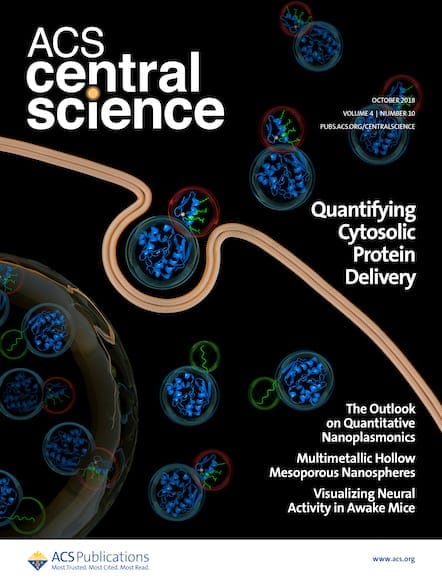Researchers have developed a novel opioid compound that offers effective pain relief with significantly fewer side effects, potentially paving the way for safer opioid medications.

An estimated one in five people have acute or chronic pain that significantly impacts their daily life and work, and it is one of the most common reasons to seek medical help.1,2 Opioid medications have long been a double-edged sword in the world of pain management; while they offer significant relief to those suffering from debilitating pain, the risks associated with these drugs—addiction, withdrawal symptoms, and potentially fatal overdoses—pose serious challenges. As we’ve discussed in previous posts, opioid use has become a big issue, with new research targeting reversal agents for overdoses and vaccinations that can prevent against addiction. But what if there was a way to design safer opioids, ones that could effectively manage pain without the dangerous side effects?
The quest to find safer opioids is not new. The primary issue lies with the mu opioid receptor (μOR), the target for most opioid medications. When activated, this receptor helps suppress pain, but it also triggers adverse effects like respiratory depression and physical dependence. Various approaches have been explored to reduce the side effects associated with μOR activation, including peripherally restricted agonists, biased agonists, ligands that target splice variants, or opioids with mixed receptor activity for different subtypes. However, despite many efforts, the risks associated with opioid use remain a critical public health issue.
Interestingly, μOR contains a highly conserved sodium binding site deep in the ligand binding pocket, which is surrounded by water molecules.3,4 With only a few exceptions, most previous research has targeted the orthosteric binding site—but in new work published in ACS Central Science, researchers describe a novel strategy to design functionally selective opioids by instead targeting the sodium binding site.5
In previous studies, the team identified a compound, C6guano, which showed promise by binding to this sodium site and reducing some of the dangerous side effects typical of opioids.6 However, C6guano had its limitations, particularly its inability to cross the blood-brain barrier.
To overcome this, the team embarked on a structure-based design journey, leading to the development of a new ligand named RO76. This compound was engineered to target the sodium site indirectly through water molecules. As far as the authors are aware, these waters have not been rationally targeted before at the μOR or other G-protein coupled receptors in ligand design.

Signaling Modulation Mediated by Ligand Water Interactions with the Sodium Site at μOR
DOI: 10.1021/acscentsci.4c00525
To assess the potential of RO76, the researchers synthesized ten compounds based on fentanyl, a potent opioid, and screened them for their ability to activate the μOR while minimizing dangerous side effects. RO76 emerged as the most promising candidate, showing moderate potency in activating the μOR while significantly reducing the recruitment of β-arrestin-2, a protein linked to many of the negative side effects of opioids, including respiratory depression. The team revealed that RO76 interacts with the sodium site in a novel way—through a water-mediated hydrogen bond. This interaction was key to its ability to modulate the receptor’s activity and reduce harmful side effects.
In mice, RO76 provided pain relief comparable to morphine, one of the most commonly used opioids, but with significantly fewer side effects. Unlike morphine, which can dangerously slow breathing, RO76 had a much gentler effect on respiration, even at higher doses. Furthermore, mice treated with RO76 showed fewer withdrawal symptoms compared to those given morphine, suggesting a lower risk of physical dependence.
While further studies are needed to fully understand the mechanisms behind RO76’s reduced side effects, this research represents a significant step forward in the ongoing effort to combat the opioid crisis, highlighting the potential of targeting lesser-known receptor sites to achieve safer therapeutic outcomes.
Previous work in the fight to develop safer opioids has also examined bifunctional ligands. As in the current work targeting the water molecules in the binding pocket, the μOR agonism activity of most dual ligands is reduced compared with classical opioids, which raises concern about their effectiveness in managing nociceptive pain. But a new class that possesses both μOR agonism and σ1R antagonism has been reported—with results showing strong analgesic efficacy alongside reduced opioid-related side effects.7 Another group has developed a thermoresponsive copolymer-based hydromorphone prodrug, with a single dose producing rapid and sustained pain resolution with a lack of systemic analgesic effect, and no tolerance with repeat dosing.8
Collectively, these findings support the ongoing development of safe, long-acting, and nonaddictive options for better clinical pain management, offering hope that patients may one day have access to pain relief that doesn’t come with the same dangerous trade-offs.
References
- Fishman, S.M. Recognizing Pain Management as a Human Right: A First Step. Anesth. Analg. 2007, 105, 8–9.
- Phillips, C.J. The Cost and Burden of Chronic Pain. Rev. Pain 2009, 3, 2–5.
- Fenalti, G. et al. Molecular control of δ-opioid receptor signalling. Nature 2014, 506, 191–196.
- Venkatakrishnan, A.J. et al. Diverse GPCRs exhibit conserved water networks for stabilization and activation. Proc. Natl. Acad. Sci. U.S.A. 2019, 116 (8), 3288–3293
- Ople, R.S. et al. Signaling Modulation Mediated by Ligand Water Interactions with the Sodium Site at μOR. ACS Cent. Sci. 2024.
- Faouzi, A. et al. Structure-based design of bitopic ligands for the µ-opioid receptor. Nature 2023, 613, 767–774.
- Miao, Z. et al. A Novel Bifunctional μOR Agonist and σ1R Antagonist with Potent Analgesic Responses and Reduced Adverse Effects. J. Med. Chem. 2023, 66, 23, 16257–16275
- Jia, Z. et al. Thermoresponsive Polymeric Hydromorphone Prodrug Provides Sustained Local Analgesia without Apparent Adverse Effects. Mol. Pharmaceutics 2024, 21, 4, 1838–1847.

